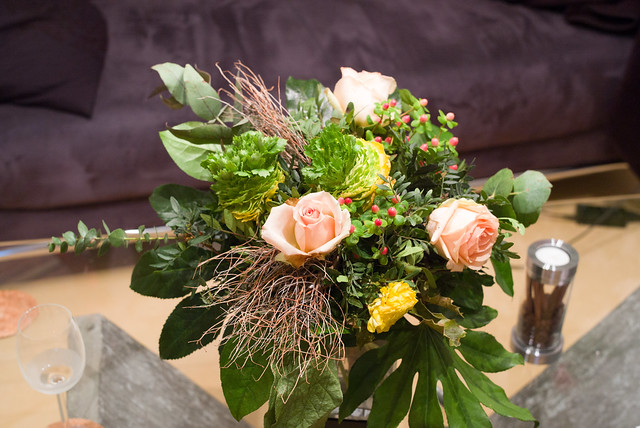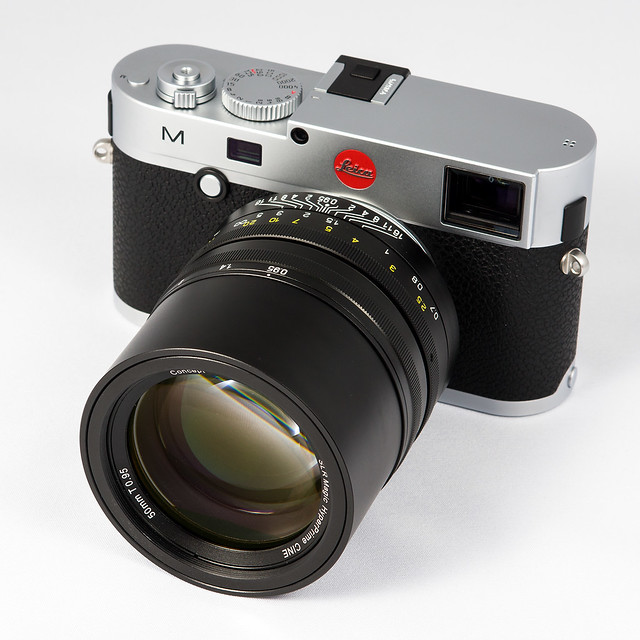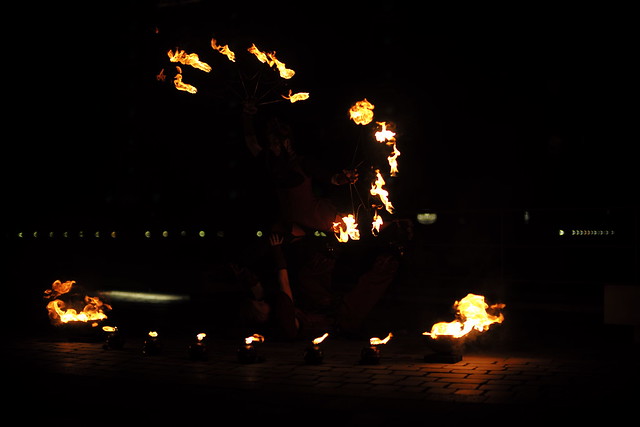Since the first copies of the new Leica M (Typ 240) appeared on the market early March 2013, there is a vast disparity between supply and demand of the new Leica M (Typ 240) causing a lot of discussion in the corresponding camera forums. In addition these discussions are heated up by quite contrary reviews and user stories expressing the whole range between absolute excitement and deep frustration. This article tries to focus on objective facts and findings determined since I entered the M community in early April. The review is underlined by many real world examples taken with M-mount lenses from Leica, Voigtlander and SLR Magic as well as some adapted Nikkor lenses. Additionally you find a short comparison to the Sony NEX-7.
Perhaps I may not be the typical Leica M customer as I do not care too much for the unique feature of the M: The optomechanical rangefinder. However this camera attracted me as it is currently the only mirrorless full frame digital camera on the market (except the Sony VG900 which is primarily a video camera) allowing to use all those really fantastic Leica M lenses and in contrast to the Leica M9 it is not limited to lenses with rangefinder coupling. Due to its live view and the optional EVF you can now use it for macro- and tele-photography and a wide range of adapted DSLR lenses as well aided by focus peaking and up to 10x magnification. Its new 24 MP CMOS sensor gains about 1 EV ISO performance and about 2 EV additional dynamic range compared to the CCD sensor of the M9 and allows to record 1080p videos at up to 25 fps with that camera as well. As I use a HyperPrime CINE 50mm T0.95 lens since about one year, I was also quite excited about that feature because at the moment it is the only combination allowing to use a 50mm f/0.92 full frame lens optimized for video. So the specifications and options sounded promising enough to ask my dealer to put me on the waiting list right in September 2012 when the camera was announced at the Photokina. In April I had the chance to get one in silver ("chrom") and immediately started exploring it.
Comparing the Leica M (with Summilux 50mm f/1.4 ASPH) to the Sony NEX-7 (with SLR Magic HyperPrime CINE 35mm T0.95)
One of the first questions on my list was: How does the M with a Leica Summilux 50mm f/1.4 ASPH compare to the Sony NEX-7 with a SLR Magic HyperPrime CINE 35mm T0.95?
Both cameras have a 24 MP sensor with about the same dynamic range (about 13.3 EV according to DxOMark sensor scores). The 1.5x crop of the APS-C sensor of the NEX-7 is compensated by the 35mm T0.95 (approx. f/0.9 geometry) lens that provides about the same field of view and depth of field when used at open aperture. Also the better low light performance (about 1 EV compared to the NEX-7) is compensated by the brighter lens. Both combinations weigh approximately 1.1 kg but balance completely different (the HyperPrime CINE is very top-heavy when used on the NEX-7, you can see it here).
Leica M + Summilux-M 50mm f/1.4 ASPH @ F1.4:
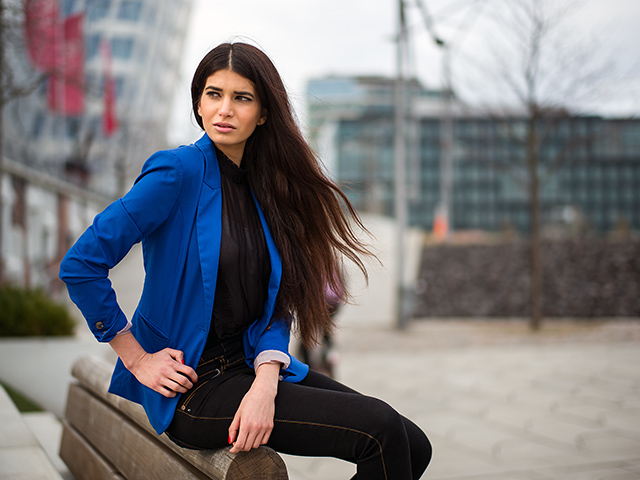
(click on image for other sizes)
Sony NEX-7 + SLR Magic HyperPrime CINE 35mm T0.95 @ T0.95:

(click on image for other sizes)
100% crops (actual pixels) from both images:

Both images required courageous postprocessing. The colors from both cameras - especially the blue and skin tones - differed a lot with AWB and Adobe's standard color profiles. So they had to be adjusted to match the look that I remember from that scene but the embedded profile that was delivered in the DNG of the Leica M came closer to reality although the red components seem to be a bit exaggerated. Sharpness is about comparable after postprocessing but the image taken with the M and the Summilux required slightly more sharpening, clarity and contrast enhancement. Although the Summilux-M is pretty sharp in the center already at open aperture, it looses microcontrast and sharpness in a sginificant degree between center and edges (you can see this also as a dent in the MTF curves when you look at the diagrams provided by Leica in the technical brochure of that lens). I took about 47 exposures in that setting with the Leica M and also varied my position slightly after focusing with the EVF magnification ("focus bracketing"), so I am quite confident about the correct focus point in the examples shown here but I am not sure if this is an issue of my particular Summilux copy.
If you peep into the pictures, you will see some moiré in the blazer's texture produced by both cameras but the Leica reproduces the blue tones and textile structure better than the NEX-7. Also noise and grain becomes more visible in the images from the NEX-7 even at base ISO after increasing contrast, sharpness, clarity etc. In the end you find some more reserve for postprocessing in the raw data coming from the Leica sensor. The bokeh produced by the lenses in this example is quite similar with a tiny advantage in smoothness for the Summilux-M.
Another example:
Leica M + Summilux-M 50mm f/1.4 ASPH @ F1.4:
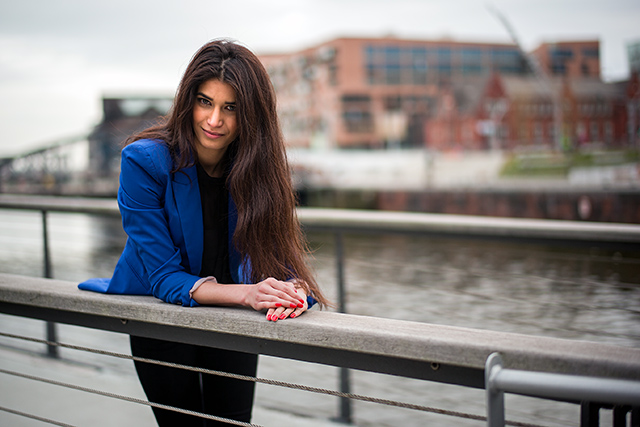
(click on image for other sizes)
Sony NEX-7 + SLR Magic HyperPrime CINE 35mm T0.95 @ T0.95:

(click on image for other sizes)
These examples are quite close to each other in terms of image quality as well but this time I prefer the bokeh produced by the HyperPrime CINE lens (of course bokeh is usually rated more subjective). If you are interested in further lens and bokeh comparisons, I recommend the "adorable 50s" and the "adorable 35s" articles on my website.
As there is currently a lot of discussion about the colors (especially the skin tones) provided by the M, here is another interpretation from these DNG raws with courtesy by "Rocco":
These interpretations (using the Aperture raw converter) are quite far away from that, what came "out-of-cam" (or that, what Adobe Lightromm / ACR deveolops with default settings) but are the more idealistic impression of what the human brain perceives in such a situation.
If you shoot at available light and go into higher ISO you may expect a slight advantage for the "M" as well. The following images were taken again at comparable field of view and comparable depth of field settings. For the Leica M this time the 50mm Summilux-M was set to F5.6, on the NEX-7 a Voigtlander Nokton 35mm F1.2 ASPH (version 1) was used at F4.0. The Leica was set to ISO 3200 whereas the NEX-7 was set to ISO 1600 due to the wider opened lens. So both cameras operated at the maximum ISO setting recommended by their manufacturers.
Leica M + Summilux-M 50mm f/1.4 ASPH @ F5.6, ISO 3200
Sony NEX-7 + Voigtlander Nokton 35mm F/1.2 ASPH (version 1) @ F4.0, ISO 1600:
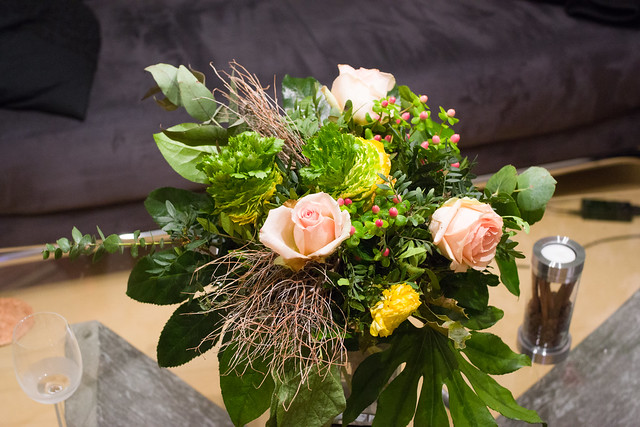
(click on image for other sizes)
100% crops (actual pixels):

Both images were developed with identical sharpness, contrast, clarity etc. settings in Adobe Camera Raw. WB was adjusted to comparable values as well. Looking at the 100% crops, you see a little bit less noise in the ISO 3200 image of the Leica than in the ISO 1600 image of the NEX-7 but the NEX preserves more details that would leave some more room for noise reduction. So over all you can get comparable results at low light as long as your lens can compensate by opening one F-stop wider on the NEX.
Using non Leica / non RF-coupled / adapted lenses on the Leica M
One of the biggest advantages of the Leica M over its predecessor is the option to use live view or an optional electronic view finder (EVF). To aid focusing, the camera provides focus peaking and an electronic magnification up to 10x. This makes it possible to use also lenses without rangefinder coupling and you see exactly what you get even with focal lengths for which the optical viewfinder does not provide frame markers. Before we discuss that in more detail let us look at some examples:
AF-S Nikkor 24mm f/1.4 G ED @ F8.0 on Leica M:
The 100% crop (actual pixels) shows good sharpness and contrast even close to the borders, so it qualifies for landscape and architectural work but due to its sharpness and the lack of an AA-filter on the Leica M sensor moiré may occur in particular situations:

Although already a wide angle lens, the AF-S 24/1.4 Nikkor allows you to play with depth of field (DOF) at open aperture as well:

(click on images to see other sizes)
Although RF-coupled I would like to show you at least one picture here from the Voigtlander Nokton 35mm f/1.2 ASPH (version 1) at F6.3 just because if the beautiful mood of light:
As mentioned earlier, the full frame SLR Magic HyperPrime CINE 50mm T0.95 lens is constructed with M-mount but not RF-coupled. It was available as RF-coupled version as well but the manufacturer does not ship this version outside Hong Kong any more. If you are interested in this lens to be used on the Leica M9, you will have to bring your camera along to Hong Kong so that the lens can be calibrated exactly to match your particular camera. The CINE version is identically constructed but not calibrated (and so costs less). It comes with M-mount as well and also pushes the rangefinder mechanism on the Leica M. The advantage over adapted lenses is that the camera will be able to switch to a zoomed magnification in the live view / EVF as soon as you turn the focus ring on the lens. It's characteristics is similar to the Leica Noctilux 50mm F/0.95 ASPH but it is a bit larger and heavier. The aperture can be operated clickless and is calibrated in T-stops (transmission stops). Its aperture blades close circular so that circles of confusion in out-of-focus areas still keep nicely round when the lens is stopped down. It produces less CA and its center resolution at open aperture is at least comparable if not better than that of the Noctilux. You can see it on the Leica M here:
Here are a couple of examples shot with the HyperPrime CINE 50/T0.95 on the Leica M all shot at open aperture (T0.95 / F0.92):
The following example was shot with that lens stopped down to approximately F8.0 in order to prolongate the shutter time:
Another lens showing very good performance even on the 36 MP Nikon D800E is the AF-S Nikkor 85mm f/1.8 G.
The title image of this article was shot with that lens, another example at open aperture:
This is a 100% crop from that image (remember: shot at open aperture F1.8!):

Dynamic range of the new M:
One target of the shooting with the fire artists was to keep the appearance of the burning flames as natural as possible. If you ever shot fire in the dark, you may have recognized that the flames are usually completely overexposed (burnt out) and can not be recovered in post processing. So I decided to underexpose the photos about 3 F-stops resulting in strictly-out-of-cam (SOOC) JPEGs like this:
So you see the flames look like the human eye perceives them but the rest seems to get lost in the dark. Thanks to the large dynamic range of the Leica M, you can push up and recover the dark areas significantly in post processing. See the result:

(click images for other sizes)
So far so good, but what kept me unsettled about the new M?
- Even now after about one and a half year the APS-C sized sensor in the Sony NEX-7 scores with a similar dynamic range and color depth compared to the new full frame sensor of the "M" and from my experience the DxOMark sensor scores are quite reliable and give a good idea what you can expect in practise. The disadvanage of the NEX-7 in ISO performance of less then one stop compared to the Leica M can be often compensated with brighter lenses (e.g. the HyperPrime CINE 35mm T0.95) or OSS available for some lenses of the NEX system. The currently best full frame sensor from Sony (used in the Nikon D800E) playes in a significantly higher league.
- The OLED based EVF of the upcoming NEX-7n is rumored to deliver already 3.8 million dots (about 2.7x better resolution compared to the aged EVF-2 available for the Leica M 240) and it is likely that this EVF will also be part of the currently rumored FF-NEX. From my point of view, the rangefinder concept is too limited when shooting tele-, UWA- and macro-lenses or lenses with extremely shallow DOF on current and future sensor resolutions so a good EVF will be required. Hopefully Leica can catch up with a firmware update in order to support at least the new Olympus VF-4 with 2.36 MDots
- The liveview magnification of Leica M 240 is limited to the center of the image. It can not be moved around the frame. If you shoot from a tripod this means you either have to move the tripod or release the camera from the tripod ballhead in order to focus an object not in the image center and reframe + tighten again before taking the shot. If you use lenses with shallow DOF and some field curvature or adapt tilt/shift lenses to the camera, it is predetermined that you will not get the optimal focus on the desired point when reframing the image after focussing. For me this is one of the biggest shortcomings of the new M wasting potential of the LV.
- Why is Auto-ISO not available anymore when a fixed exposure time is selected (this is especially a drawback when recording movies)? If you try to work around this, you'll either have to use the 1/(focal length) shutter time limitation but this is also only step in the right direction. To be really usefull, Leica would have to add 1/(2x focal length) and 1/(3x focal length) as the old rule of thumb is not valid anymore in the age of 24 MP sensors and large 4K displays.
- The current video implementation shows that Leica still will need some more time and listening to market requirements (and perhaps additional firmware updates) before this feature will attract a larger number of film makers permanently. Why no HDMI-output? Here I missed the auto-ISO function even more. Meanwhile the others go already for RAW + 4K...
- The sensor seems to attract dust significantly more than I know it from other cameras so far.
- Leica is plagued by some quality problems with the new M but I will not comment this her further and just hope they will handle this in a satisfactory manner. My copy had to be shipped to Leica as well for inspection and repair but furtunately I had to wait only about one week.
To see the impact with lenses that have an extremely shallow dept of field when precise focusing is restricted to the center, I made an experiment. The camera was set on a guide rail allowing to simulate focus bracketing:

Now the camera was focused to the tip of the pencil (distance: 2m) in the center using live view with 10x magnification:
Afterwards the camera was tilted on the tripod head in order to reframe the picture:
Now the camera was shifted backwards in 1 cm steps. The crops show that the sharpness optimum was reached at an offset of about 5 cm.

The same test with the Leica Summilux-M 50/1.4 ASPH showed that the camera had to be shifted about 1-2 cm in order to compensate the focus shift when the image is reframed after center focusing. If this effect is acceptable on other lenses will depend on the individual lens but this effect should not be new to rangefinder users.
Leica M and video:
I did take only some short motion video snippets but if you would like to get a deeper insight into the world of fire artistry and juggling presented by two exceptionally charming and creative girls, please enjoy Caro and Kathleen from "Duo Flammenspuk" in this little slideshow containing some video sequences:
(Please select HD 1080p and fullscreen in the player's button bar for best viewing experience. If you can not see the embedded video, please go to http://youtu.be/npIJ1OEz2Ic or http://vimeo.com/hhackbarth/flammenspuk. More photos can be seen in a Flickr-Album).
Please note that the flabby sequences you may determine during motion video were not caused by the camera. Due to some shaky handheld recording the motion pictures had to be deshaked in post production. For more information about "Flammenspuk", please see http://www.flammenspuk.de
Albeit in the beginning I already stated that I try to focus more on objective facts than emotions when choosing my gear, please take it as my personal view.








